One Rose for Rome
The beauty of the Eternal City is enchanting and casts a spell on whoever puts a step on its centuries-old cobblestones. I have been under that spell for over six years now since the day I moved to Rome as a temporary resident. I completely fell in love with the city.
Whilst residing close to Piazza del Popolo, I was captivated by the refined sculptures, fountains, arrangements of the churches, and the Terrazza del Pincio which formed a grand panorama with a phenomenal atmosphere. It incited my curiosity to delve into its history and find out more.
The Piazza originally had a trapezoidal square form. However, between 1811 and 1822 the architect Giuseppe Valadier was commissioned to transform and give it a neoclassical look. He removed a modest fountain and demolished some insignificant buildings, replacing them with two semicircle walls, reminiscent of Bernini’s plan for Saint Peter Square, adjoining fountains and sculptures all along the way. In the middle stands an obelisk that was brought from Egypt to Rome by Augustus in 10BC, originally set up in the Circus Maximus. It is believed to be the second oldest obelisk and the tallest in Rome. A fountain of four Egyptian style lions was added around the base of the obelisk. Behind the semicircle walls, Giuseppe Valadier, incorporated a verdure of plants including trees as an essential element. He impregnated that space in a third dimension stretching it all the way up to the balustraded overlook from Pincio. Just behind one of the semicircle walls, facing Pincio, is a small patch of land where I would often meander on a walk or stop to eat a gelato and admire the view of the Piazza. As many know, the area is breathtaking; however, at the same time it was also subject to significant littering by uncultivated people causing discomfort to anyone who would want to enjoy the momentum.
I remember that spring evening on the 22nd March 2019 when I decided to clean up some of the litter so as to better enjoy the view and my gelato. I then planted one rose as a “token”, – as a symbol of hope to prevent others from littering the spot. When I revealed my deed to a few friends, they all voiced an unexpected interest to join. The following day, a Roman friend decided to plant his rose next to mine, then family members and other friends joined, one after the other. Word-of-mouth spread fast! Whilst I was maintaining and watering the roses, passersby, some of whom lived in the neighborhood, approached me with curiosity and interest to know more about the roses which were suddenly emerging one by one, almost day by day. Many who have walked by or heard about the initiative have expressed their wishes to plant a rose and beautify the spot. This included Romans, expats, visitors, diplomats, tourists, the president of Professional Women’s Association (PWA) and six other members, and even two homeless people. Soon enough, it grew into something beyond my wildest imagination. In a short period of time this patch of land happened to become a bridge of shared affection, uniting us all: local Romans, Italians from other regions of the country, expats and visitors from all over the world. For the expats and visitors, it may have meant something even more; a “token” to leave behind, a symbolic bond with Rome to which their kids could return to one day. As for the homeless, perhaps something of an affinity; a bosom pal.
The first homeless person who passed by was a young man called Stefano from Genova. He slept rough on the streets of Rome for several years, relying on the goodwill of the few who pitied him. My offering for him to plant a rose was something he could not comprehend at first: he thought that I was giving him a rose to take away with him. I explained that it would be greater if the rose could be planted by him. Whilst planting his rose, many passersby were greatly touched by his endeavor and even asked him to plant their roses as well, offering remuneration for his assistance. The smile on Stefano’s face grew bigger each time and the bond to each rose was made stronger. A few months later he returned to Genova to be with his father who was ill. The second homeless person, Nicolai, is semi-blind as he has only one eye. He often begs on the stairs of the churches nearby. He, too, thought that I was giving him a rose to take along on his journeys but was even happier to know that he could plant it among the rest. Even though he could not see well, he was determined to plant the rose himself. Every time that I meet him, he tells me proudly that his rose is the most beautiful rose in the world. I feel so humbled by the impact that these roses have had for these two homeless persons.
Many of us – if not all – saw the act of planting a rose as a way of expressing gratitude and love for the charm and beauty that this city has offered in our lives. As popularity increased and more roses were planted, a name was created: One Rose for Rome (Una Rosa per Roma). Today, it has turned into an initiative which brings together a group of like-minded people who love the city and take pride in giving something back to it. Recently, we decided to attach little tags to each rose which indicate the first name and the city or country of its planter; a way to remember those who have contributed to the growing garden.
The roses need continuous work: trimming, pruning, good soil and a lot of water during the hot summer days. This is maintained by whichever volunteer is around and available to dedicate their time. At the moment, the source of water for the roses is derived from the nearby fountains and carried mainly in water buckets or bottles. We dream to make this process more sustainable. Our goal is to install a water source closer to the roses and improve the quality of the soil. One of our members, Mario, a senior Roman who brings 100 litres of water twice a week with his car, happened meet the Mayor of Rome, Virginia Raggi, one day during an event at Piazza del Popolo. He outlined the initiative to her and gently proposed the idea to install the very much-needed water supply at the roses. To our delight, the Mayor has made a commitment to support us and organize a water source nearby. She has entrusted her colleague, Simone Ferrari, who was at the event, to act upon her considerate offer. Our dear Mario did not miss the opportunity to take a photo with the Mayor. Three days later, Mr. Ferrari graced us with a visit at the roses and promised to address the issue this autumn.
As a temporary resident, my stay in Rome is coming to an end and I will be leaving Rome soon. I will have to say good-bye and cherish all the beautiful memories in my heart. I do, however, hope to return and visit the roses, the city, and the many dear friends who have made my stay in Rome so memorable and remarkable. I would like to humbly thank everyone for their courage, valuable support and eagerness to make sure that our beautiful roses can prosper, as we are all well aware that each rose has a deep significance to each person who took time out of their day to plant one. They stand as little tokens to beautify Rome, deter people from littering this city we call home, and improve the environment, for ourselves and our loved ones. I am very honored to have been part of this initiative and I am thankful to everyone who believes in it.
By Ecaterina Schilling
Rome, September 2020


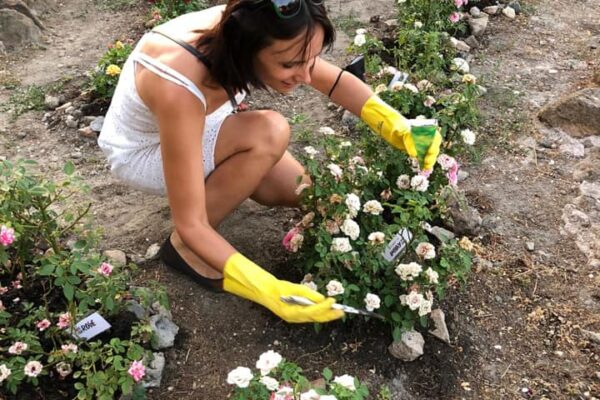
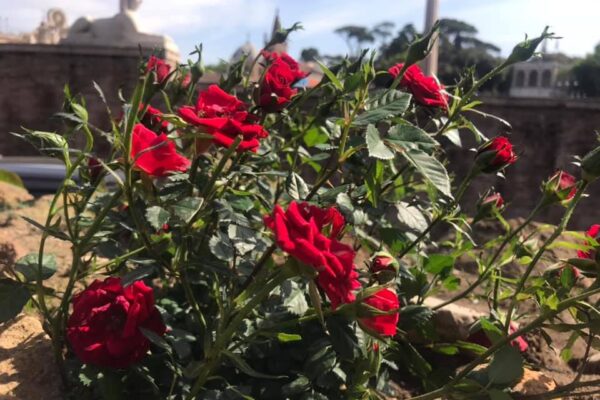
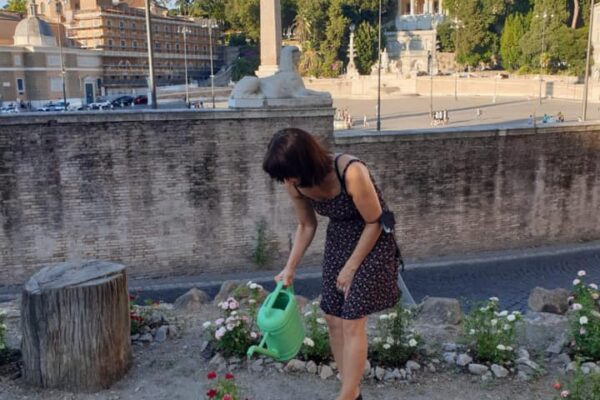
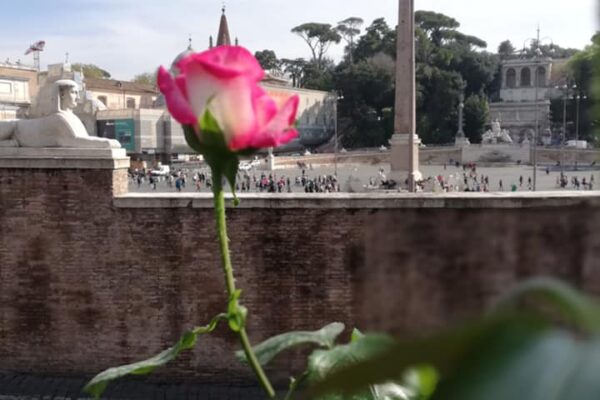

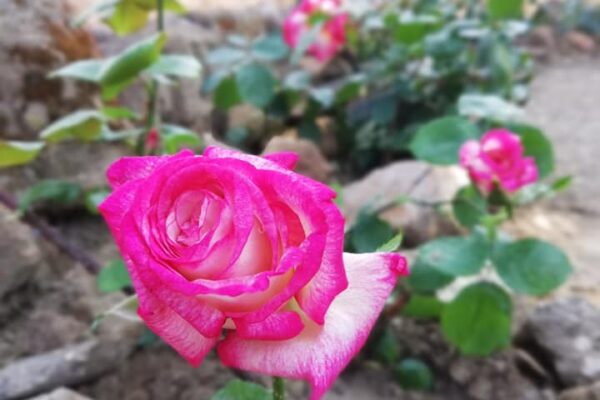
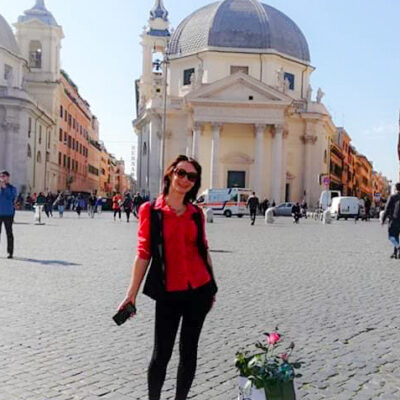
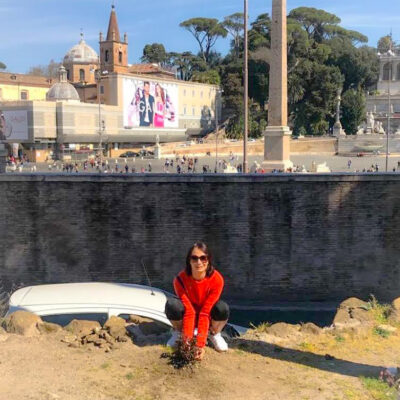
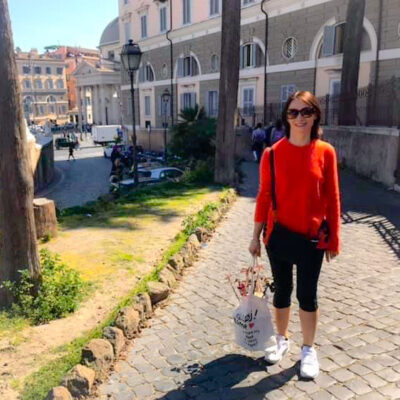
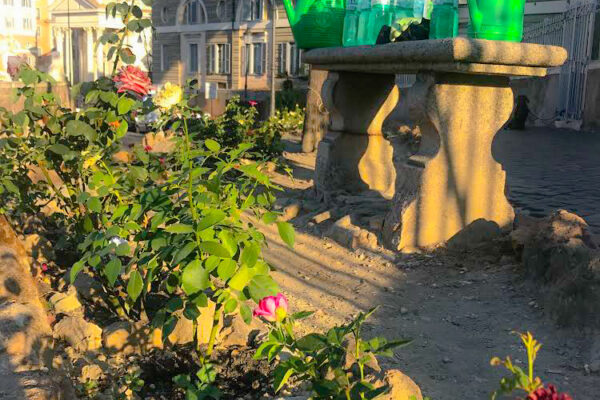
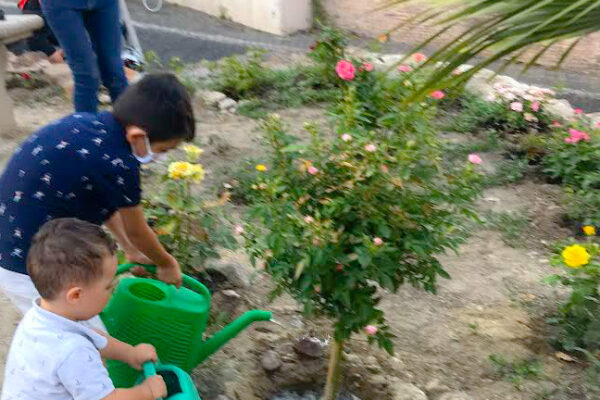
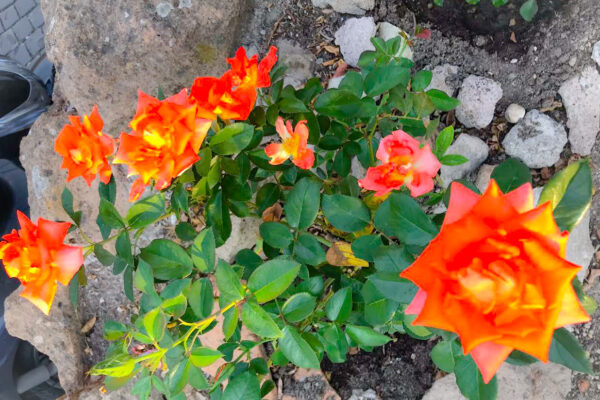
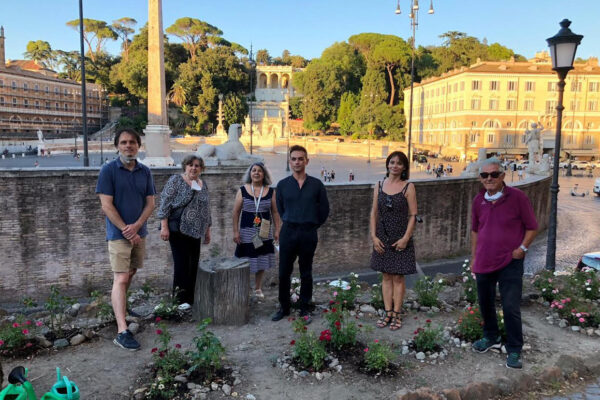
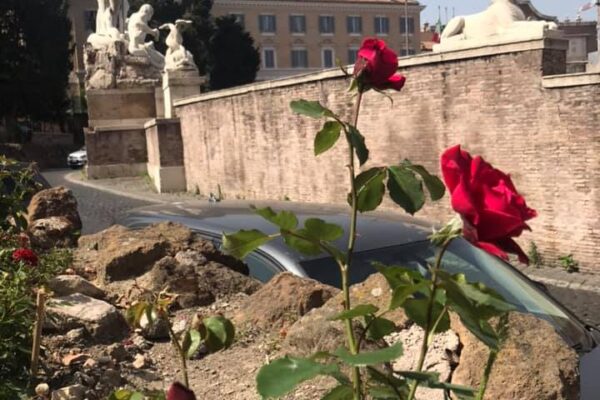
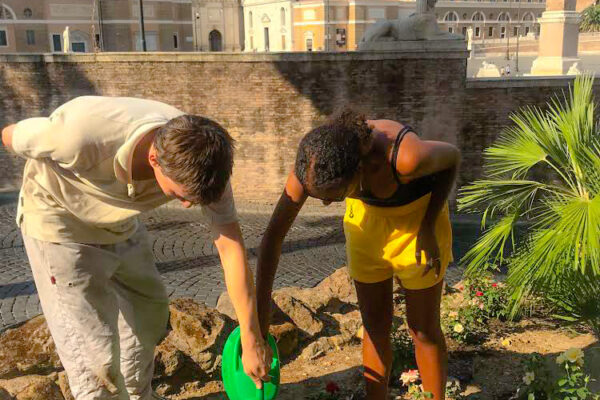
4 Commenti. Nuovo commento
How inspiring is this! I love the initiative and how it became a community action.
thank you Ecaterina!
Thank you so much .
This is an amazing initiative that shows the power of community engagement. Well executed and managed by the people for the people. Thanks to Ecaterina’s vision, passion, and creativity. Superb leadership!
COMPLIMENTI ottima iniziativa!!!!